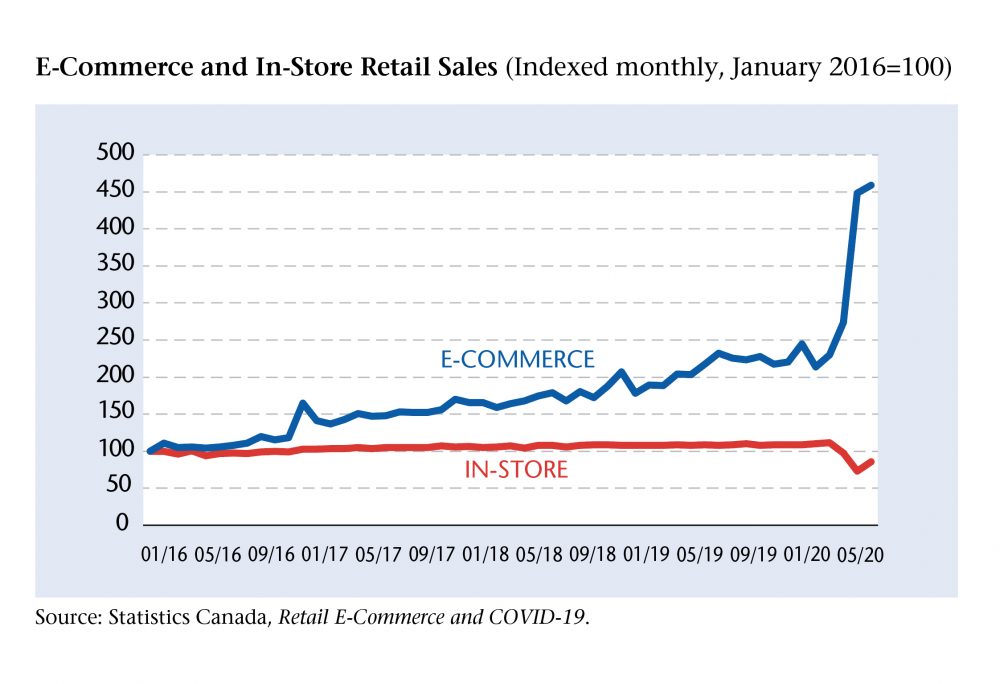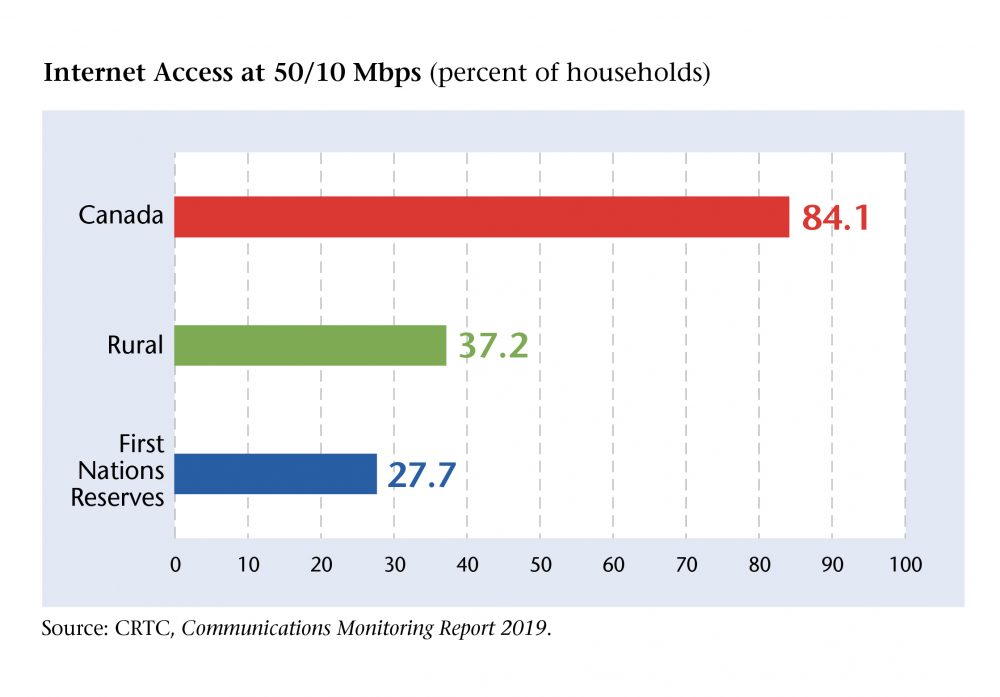2030 Today: COVID and the Online Economy

If anyone knows how to adapt and innovate amid dizzying change, Shopify does. The Ottawa-based e-commerce platform has been at the forefront of the lockdown migration to the digital economy, massively expanding its online merchant base, helping entrepreneurs “future-proof” their businesses and becoming the most valuable publicly-traded company in Canada. Shopify’s Clark Rabbior looks at how the pandemic has acted as a force multiplier for innovation, and what a suddenly telescoped future may hold.
Clark Rabbior
The COVID-19 pandemic has revealed two very different entrepreneurial experiences in Canada. Businesses with access to high-quality digital infrastructure and technological expertise have weathered the worst of the crisis. By contrast, businesses that have not made the shift to digital commerce are suffering. The gap between connected and disconnected entrepreneurs is wide, and prevents many from generating prosperity for themselves and their communities.

Canada’s future competitiveness depends on entrepreneurs and a robust digital infrastructure to support them. The pandemic has put that infrastructure to the test and revealed substantial inequities in entrepreneurial opportunity. Entrepreneurs in rural and remote areas, as well as Indigenous peoples, racialized minorities, women and people in lower income households have less access to critical resources than others. We have an entrepreneurial ecosystem that works for some, but requires others to compete with one arm tied behind their back.
Expanding digital infrastructure, and enhancing digital skills, will ensure entrepreneurs have the financial resources they need to survive the current economic crisis, and well into the post-COVID future.
The economic crisis sparked by COVID-19 accelerated and exacerbated trends in entrepreneurship in Canada—good and bad.
Many entrepreneurs have been resilient, quickly embracing e-commerce and digitization to serve customers online. Prior to the pandemic fewer than one in five Canadian businesses were set-up for e-commerce, but that accelerated dramatically over the last six months. While retail sales overall declined by nearly 18 percent from February to May, e-commerce sales nearly doubled, according to Statistics Canada. Many entrepreneurs who have embraced and prepared for the digital age are not just surviving, they are thriving.
While some businesses and consumers are thriving in the age of digital entrepreneurship, many are locked out of opportunities to succeed. Insufficient access to reliable, high-speed internet is a key driver, one in 10 Canadian households remains unconnected, according to the Canadian Radio-Television and Telecommunications Commission (CRTC). This impacts rural and lower-income households, Indigenous communities and many racialized minorities, limiting opportunities for people to participate as equals and entrepreneurs in the digital age.
In rural and remote locations in Canada, whole communities are left behind. While nearly 85 percent of Canadian households have access to minimum speed targets set by Canada’s Connectivity Strategy (50 Mbps download/10 Mbps upload), only 37 percent of those in rural communities and 28 percent of First Nations reserves have access to those speeds, according to a 2019 CRTC report. These structural barriers are limiting not only the social and economic well-being of those communities most affected, but all of Canada.

Recognizing the pressing need to adapt business sales platforms and strategies to the lockdown economy and beyond has resulted in federal and provincial governments in Canada, along with private sector partners, launching a number of support programs. Initiatives to help businesses establish an online presence—including support both on the technical and managerial side of transformation—have been among a suite of highly subscribed programs, according to the Toronto Star.
The federal government has also renewed its promise to ensure that rural and remote communities will have better connectivity and signalled that, as CBC Radio has reported, it’s considering making high-speed internet an “essential service.” Both initiatives are critical if rural businesses and consumers are to participate equally in the digital economy.
While governments across Canada have quickly developed and deployed a range of measures to address the health and economic crisis, longer-term initiatives to support equitable entrepreneurship in the digital age are still needed. Visions of an online economy by 2030 have been pulled forward to 2021 by our pandemic realities. Previous connectivity recommendations that used a five-to-10-year horizon for implementation need to shift to a 5-to-10 month horizon-or sooner. Securing opportunities for all Canadians to be successful entrepreneurs, and building an economy in which entrepreneurship effectively underpins Canadian competitiveness and prosperity, depends on accelerating connectivity, digital skills, and financial investments.
COVID-19 was a wake-up call for Canada’s entrepreneurial economy. It showed us that some entrepreneurs have resources to be resilient and thrive, while others have seen their existing challenges and barriers accelerate, further limiting chances of success.
The gap between these two experiences in Canada must be closed. We not only need Canadians to be more entrepreneurial, we need to ensure that entrepreneurial Canadians have the digital and financial resources to succeed. To compete for gold in the global digital economy, Canadians will need gold standard resources, talent and connectivity.
Clark Rabbior is Head of Government Relations for Shopify.
